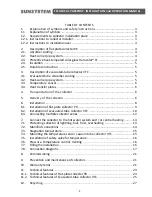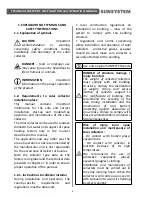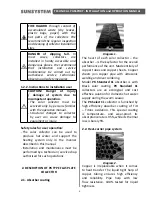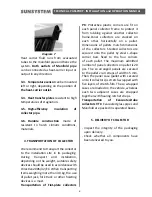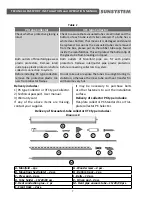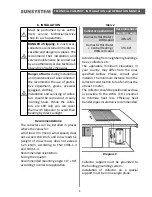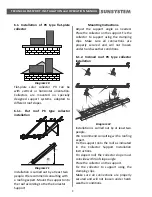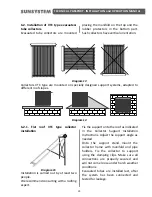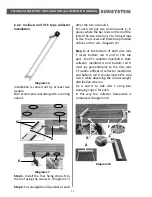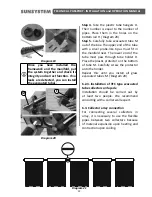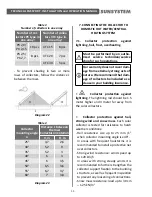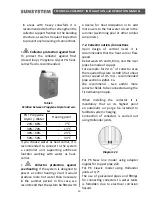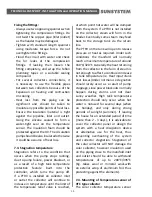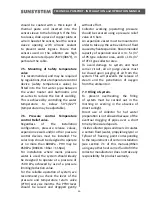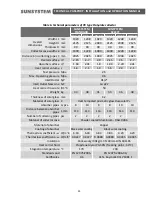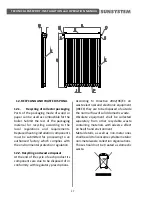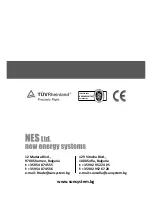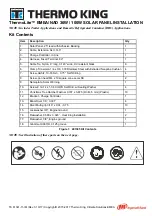
15
TECHNICAL PASSPORT. INSTALLATION and OPERATION MANUAL
TECHNICAL PASSPORT. INSTALLATION and OPERATION MANUAL
Fixing the fittings
:
- Always use two opposing spanners when
tightening the compression fittings. Do
not twist the
copper pipe (inlet/outlet)
as the header maybe damaged.
- Tighten with standard length spanners
using moderate torque force. Do not
overtighten the fittings.
- Flood the circuit with water and check
the for leaks at the compression
fittings. If leaking then
loosen the
fitting completely, and wrap the Teflon
plumbing tapes or a suitable sealing
compound.
- For several collectors connections, it
is necessary to use the flexible pipes
between two collectors because of the
Expansion on heating and contraction
on cooling.
- Heat loss from the piping can be
significant and should be taken to
insulate any possible points
of heat loss.
Ensure the insulation material is tight
against the pipeline, inlet and outlet.
Using the silicone sealant to form a
water-tight seal on the temperature
sensor.
The insulation foam should be
protected against the UV. The circulation
pump should be also
insulated otherwise
it could be a source of heat loss.
7.3.
Stagnation temperature
Stagnation refers to the condition that
occurs when the pump stops running,
due to pump failure, power blackout, or
as a result of a high tank temperature
protection feature built into the
controller, which turns the pump off.
If a PTRV is installed on collector inlet
or outlet the collector will continue to
increase in temperature until the limit of
the temperaure relief valve is reached,
at which point hot water will be dumped
from the system. If a PTRV is not installed
on the collector, steam will form in the
header. Eventually some steam may feed
back to the storage tank via the return
line.
The PTRV on the tank will open to release
pressure or heat as required. Under such
conditions the manifold will normally
reach a maximum temperature of around
160°C/320°F. Generally the heat returning
from the collector in the form of steam is
not enough to affect a continued increase
in tank temperature (ie. Heat input <tank
heat losses)Under normal use stagnation
should rarely occur as a result of pump
stoppage, since power blackouts normally
happen during storms and not clear
sunny weather. High tank temperature
protection should only occur when hot
water is notused for several days (when
on holiday), and only during strong
periods of sunlight (summer). If leaving
the house for an extended period of time
(more than 2 - 3 days), it is advisable to
cover the collector panel or design the
system with a heat dissipation device
or alternative use for the heat, thus
preventing overheating of the system
and collector stagnation. Stagnation of
the solar collector will NOT damage the
solar collector, however insulation used
on the piping close to the manifold inlet
and outlet should be able to withstand
temperatures of up to 200°C/395°F.
(Eg. Glass wool or mineral wool-with
an exterior wrap of aluminium foil, thus
protecting against the elements).
7.4.
Mounting of Temperature sensor of
VTC type collector
The solar collector temperature sensor


